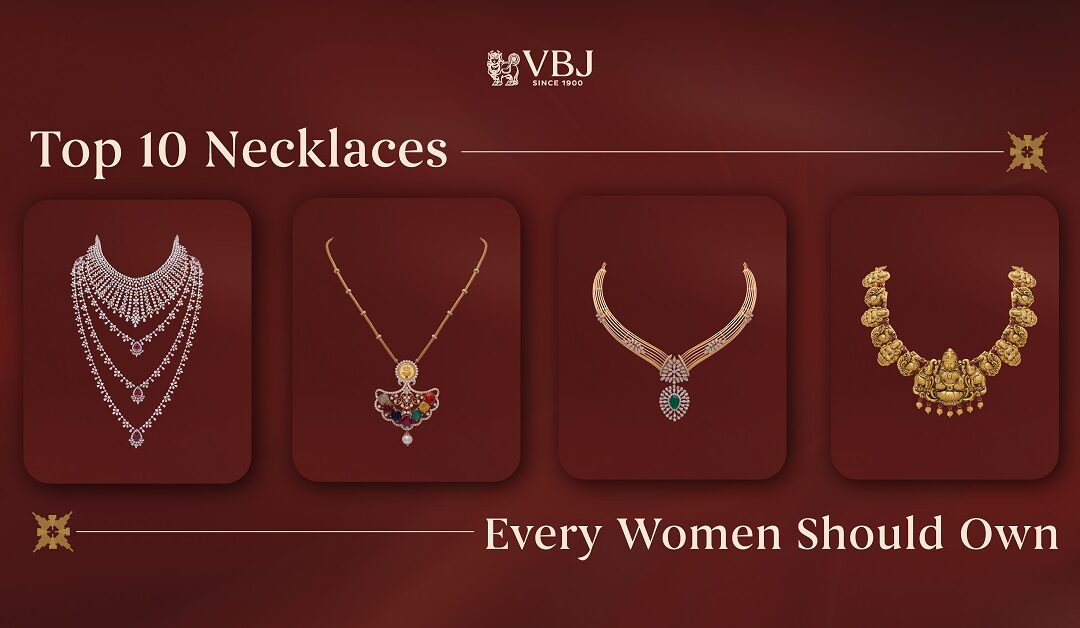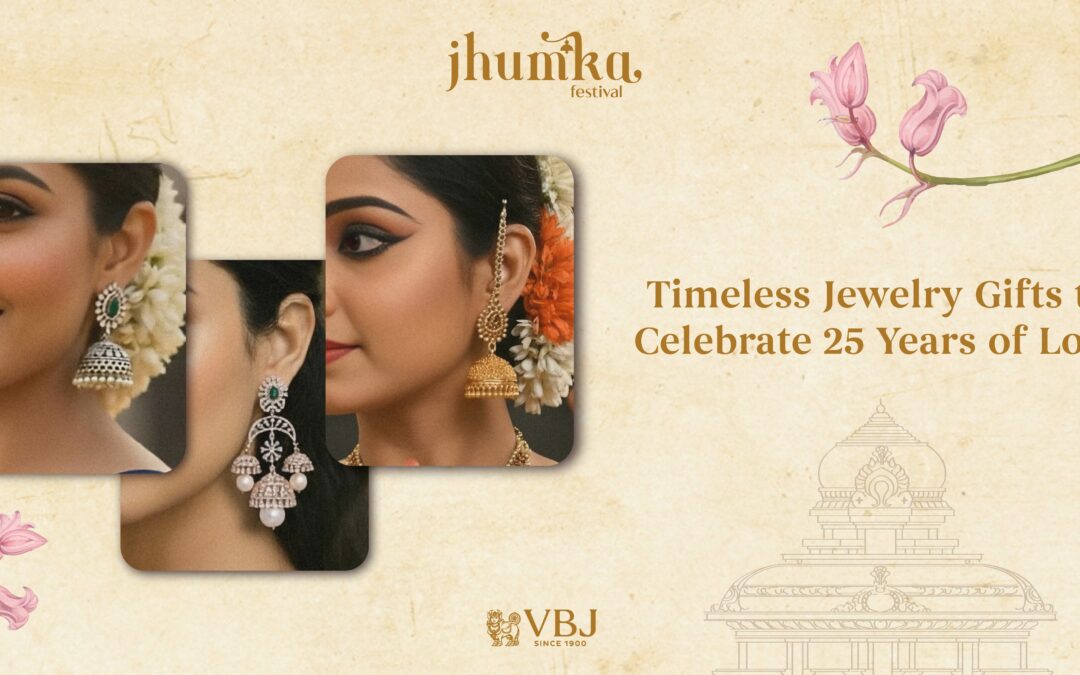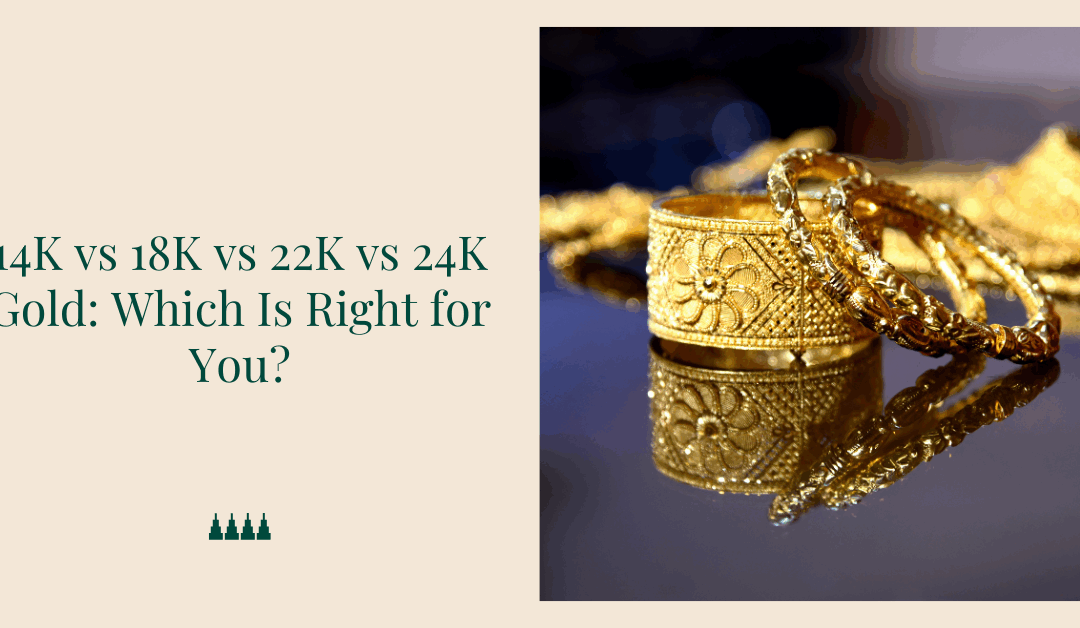India is the land of rich traditions and vibrant festivals. It is renowned for its heritage of traditional jewellery with immense cultural and emotional significance. In this blog, let’s explore Indian traditional jewellery from head to toe. Let’s get started!
Significance of traditional jewellery in India
Traditional jewellery has always played an important role in Indian culture. For centuries, jewellery has been an integral part of celebrations, rituals and everyday wear for both men and women across different parts of India.
The types of jewellery worn vary according to region, religion, and occasion. Beyond just being decorative pieces, Indian traditional jewellery also holds deep symbolic meanings.
If you are wondering where to buy them, look no further than Vummudi Bangaru Jewellers
Types of Traditional Indian Jewellery with Their Names & Descriptions
| Jewelry Category | Names | Description |
|---|---|---|
| Head | Maang Tikka, Matha Patti, Jhoomar | Maang Tikka is an ornament in the hair parting, symbolizing marital status. Matha Patti is a forehead band. Jhoomar is a side head ornament, popular in Punjab. |
| Earrings | Jhumkas, Chandbalis, Balis, Kundal | Jhumkas are bell-shaped dangling earrings. Chandbalis are crescent moon-shaped earrings. Balis are ring-shaped earrings. Kundal are curved earrings. |
| Necklaces | Haar (or Haaram), Choker, Rani Haar, Mangalsutra | Haar is a long, multi-strand necklace worn by brides. Choker necklaces hug the neck. Rani Haar is a long, layered necklace. Mangalsutra is a sacred wedding necklace. |
| Hands | Bangles, Kadas, Haath Phool | Bangles are rigid bracelets, often worn in sets. Kadas are wider, more ornate bracelets. Haath Phool is a hand harness connecting rings to a bracelet. |
| Waist and Feet | Kamarbandh (or Oddiyanam, Vaddanam, Tagdi), Payal (or Paizeb, Anklet), Toe Rings (or Bichiya, Bichwa) | Kamarbandh is a hip chain or waist belt. Payal are anklets with bells or embellishments. Toe Rings are traditionally worn by married women on the second toe. |
Here’s the guide to Indian traditional jewellery from head to toe
1). Head
Let’s begin with adorning the head.
- Maang Tikka
No Indian bride is considered fully dressed without her maang teeka. The maang teekaa, an ornament worn in the centre part of the hair, represents a woman’s marital status and symbolises love and commitment between the bride and groom.
It is believed to protect the bride from any evil eye.
- Maang Patti
Another popular headpiece is the maang patti, a broad forehead band made with gold and strung with pearls or stones that accentuates facial features. Worn by married women, it adds grace and enhances beauty.
- Jhoomar
The jhoomar came to India with the Mughals and is worn by brides and young girls during festivals and ceremonies, especially in Punjab. Its intricate embroidery and mirrorwork make it a visual delight.
2). Hair
Let’s move down to the locks of hair.
- Jadanagam
Jadanagam is a traditional hair accessory worn by women in South India. Made of gold threads woven into intricate patterns and studded with gems, wearing a jaadanagam was considered a sign of marital status and social standing.
It not only kept the hair in place but also accentuated beauty.
3). Ears
Let’s explore the ear accessories.
- Juhumkas
The jhumkas, or dangling earrings, have been a classic Indian favourite for ages. Their design varies across regions – from heavy Kundan to lightweight jhumkas. Their swinging motion adds grace and charm to the wearer’s personality.
- Balis
Balis are another common ear ornament, a simple yet elegant way to dress up the ears. Their design can be as basic as small gold or diamond dots or elaborate artworks with emeralds, rubies and pearls.
Worn daily by women across age groups, Balis suits all occasions, from festivals to office wear.
- Studs, hoops, drops, dangles
From tiny gold or diamond studs to chunky kundan-studded hoops, Indian earring styles offer variety.
Long dangling earrings with gem drops are favourites for weddings, while lightweight designs can be worn any day. This diversity allows women to flaunt different looks for all occasions.
4). Nose
Here is the favourite jewellery of ancient Indian women.
- Nose ring
The traditional gold or silver nose ring, also called a nath, was widely prevalent in South India as a symbol of beauty and womanhood. Even today, the nose ring retains its charm. In South Indian weddings, the bride mostly wears an ornate nose ring.
5). Neck
Let’s move down the neck.
- Haaram
The haar or haaram is the most iconic piece of Indian bridal jewellery. It is a long, multi-strand necklace worn by brides that extends from the neck to the waist.
Traditional haars feature precious stones, coins and intricate embroidery work. The heavier the haar, the more prestigious it is considered.
- Chokers
Chokers are short necklaces that hug the neck elegantly. Simple gold chains or ones encrusted with emeralds, pearls or diamonds, chokers never fail to accentuate the collarbone area. They project poise and grace.
- Necklace
Beyond haars and chokers, layered necklaces in multiple strands are also trendy. Shorter necklaces may be worn together for a stacked look.
Delicate gold necklaces with pendant designs or ones woven with small pearls also make for beautiful everyday wear. Regional styles vary from long, ornate neckpieces in South India to simpler, lightweight designs in other parts.
6). Hands
Let’s adorn the hands.
- Bangles
Made of glass, lac, silver, gold or other materials, bangles have been an intrinsic part of Indian women’s attire. The tinkling sound and grace they add to the hands make them a classic staple.
- Kangan/Kadas
The kangan, a traditional Gujarati armlet, and the kada worn in parts of India are considered auspicious. They exude elegance and strength and extend from the wrist to the elbow in polished designs.
- Hathphool
It is an exotic ornament that covers the back of the hand and extends to the fingers. It adds a unique touch to the bride’s hands.
- Bajubandh/Vanki
The elegant upper armlets accentuate the arms and come in varied styles mirroring regional crafts. It is adorned with traditional motifs and gemstones.
7). Finger
How can we forget our fingers?
- Finger ring
Finger rings have also been an integral part of Indian bridal jewellery and are not limited only to engagements and weddings. Rings come in diverse styles, from simple gold bands to elaborate kundan and polki settings. They add the perfect finishing touch to an Indian bride’s hands.
8). Waist
Let’s look into the waist belt.
- Kamarbandh/Odiyanam
Waist belts add the perfect finishing touch to an Indian bride’s sari. It accentuates their waistline and symbolises femininity and beauty. It has intricate designs and gemstones. Beyond aesthetics, it is thought to keep away the evil eye and bring good fortune in married life.
9). Feet
Last but not least, let’s adorn the feet.
- Payal/Anklet
The tinkling of tiny bells has added rhythm to Indian classical dance for centuries. Payals come in myriad regional designs- from delicate gold bells to heavier ones studded with stones.
In some areas, it is still customary to gift the bride a new payal set during her henna ceremony. Payals have thus become an integral part of Indian women’s cultural identity over the ages.
- Toe ring
In South India, brides traditionally wear an ornate silver toe ring during wedding rituals. Beyond beauty, toe rings protect the wearer from negative energies.
Even today, Indian women feel incomplete without their toe rings, which have become a way to empower and beautify themselves according to deep-rooted cultural practices.
Choose VBJ for your head-to-toe traditional jewellery purchase!
If you are searching for exquisite jewellery, Vummudi Bangaru Jewellery is the ideal destination. It is known for its stunning designs and superior quality. From necklaces and earrings to rings, pendants and bracelets, there is something for everyone.
It offers a wide range of jewellery, from diamonds to gold, silver, and platinum. It has a vast selection of traditional South Indian jewellery and modern and contemporary designs.
If you have a wedding any sooner, purchase head-to-toe jewellery at one destination- VBJ!
Conclusion
Indian traditional jewellery is more than just decorative pieces- it holds deep symbolic meanings and cultural significance. It has been an integral part of Indian celebrations, rituals and everyday wear.
Beyond just accentuating beauty, different types of jewellery worn from head to toe represent aspects like marital status, religion, and social standing.
So, whether you’re an admirer of Indian traditional jewellery or a bride-to-be preparing for your big day, head to VBJ for some timeless and classic collections.
FAQs Related To Types of Indian Jewellery From Head to Toe
What is the history of traditional jewellery in India?
The history of traditional jewellery in India dates back thousands of years, with pieces worn since the Indus Valley Civilization era for their aesthetic, cultural and religious significance. Different regions developed their distinct jewellery styles over centuries, influenced by local craftsmanship traditions and beliefs.
What is the name of the Indian jewellery on the head?
The most commonly worn head jewellery accessories are maang tikka, maang patti and jhoomar. These head ornaments hold cultural significance and accentuate the beauty of the wearer.
What are the characteristics of Indian jewellery?
Indian jewellery is highly crafted, featuring delicate designs, intricate stone embellishments and symbolisms. It is made of gold, silver, precious and semi-precious stones. Its designs and styles vary significantly. It carries a deep cultural significance as part of rituals, celebrations and a woman’s identity in society.
What is the importance of traditional jewellery?
The cultural and symbolic significance of traditional Indian jewellery is unparalleled. The intricate designs worn from the head to the toe symbolise aspects such as marital status, religious adherence and social status. In addition to its aesthetic appeal, jewellery plays an essential role in rituals, festivals and the empowerment of Indian women per age-old customs.
What are the types of Indian jewellery?
Some types of Indian jewellery include kundan, polki, jadau, meenakari, temple, navratna, thewa, filigree, and antique jewellery.
What are the main types of jewellery in India from head to toe?
Traditional Indian jewellery includes maang tikka (forehead), earrings, necklaces, bangles, rings, anklets, and toe rings. Each piece holds cultural significance and varies by region. From elaborate Kundan sets to simple gold chains, these different types of jewellery names represent India’s rich heritage and craftsmanship traditions.
Which traditional Indian jewellery pieces are worn on the head?
Head jewellery in India includes maang tikka, matha patti, passa, and hair accessories like jadau pins. These traditional jewellery names are essential for bridal looks and festivals. The maang tikka, worn on the centre parting, is among the most recognisable types of Indian jewellery for the head region.
What are the different types of necklace styles in Indian jewellery?
Indian necklaces include chokers, short necklaces, long chains, and layered sets. Popular traditional indian jewellery styles are Kundan, Polki, Temple jewellery, and regional variants like Rajasthani and South Indian designs. These jewellery types in India range from delicate daily wear to elaborate ceremonial pieces with intricate craftsmanship.
Which traditional jewellery pieces are worn on hands and arms?
Hand and arm jewellery includes bangles, bracelets, rings, and armlets (bajuband). These types of jewellery in India vary from gold kadas to colourful glass bangles. Traditional indian jewellery for hands often features intricate designs with gemstones, and different regions have unique styles representing local cultural traditions and preferences.
What foot jewellery is part of traditional Indian jewellery collections?
Foot jewellery includes anklets (payal), toe rings (bichiya), and foot chains. These different types of jewellery names are integral to Indian bridal wear and cultural ceremonies. Anklets often feature bells and intricate patterns, while toe rings symbolise marital status, making them essential traditional jewellery pieces in Indian culture.
 Store Locator
Store Locator 







0 Comments